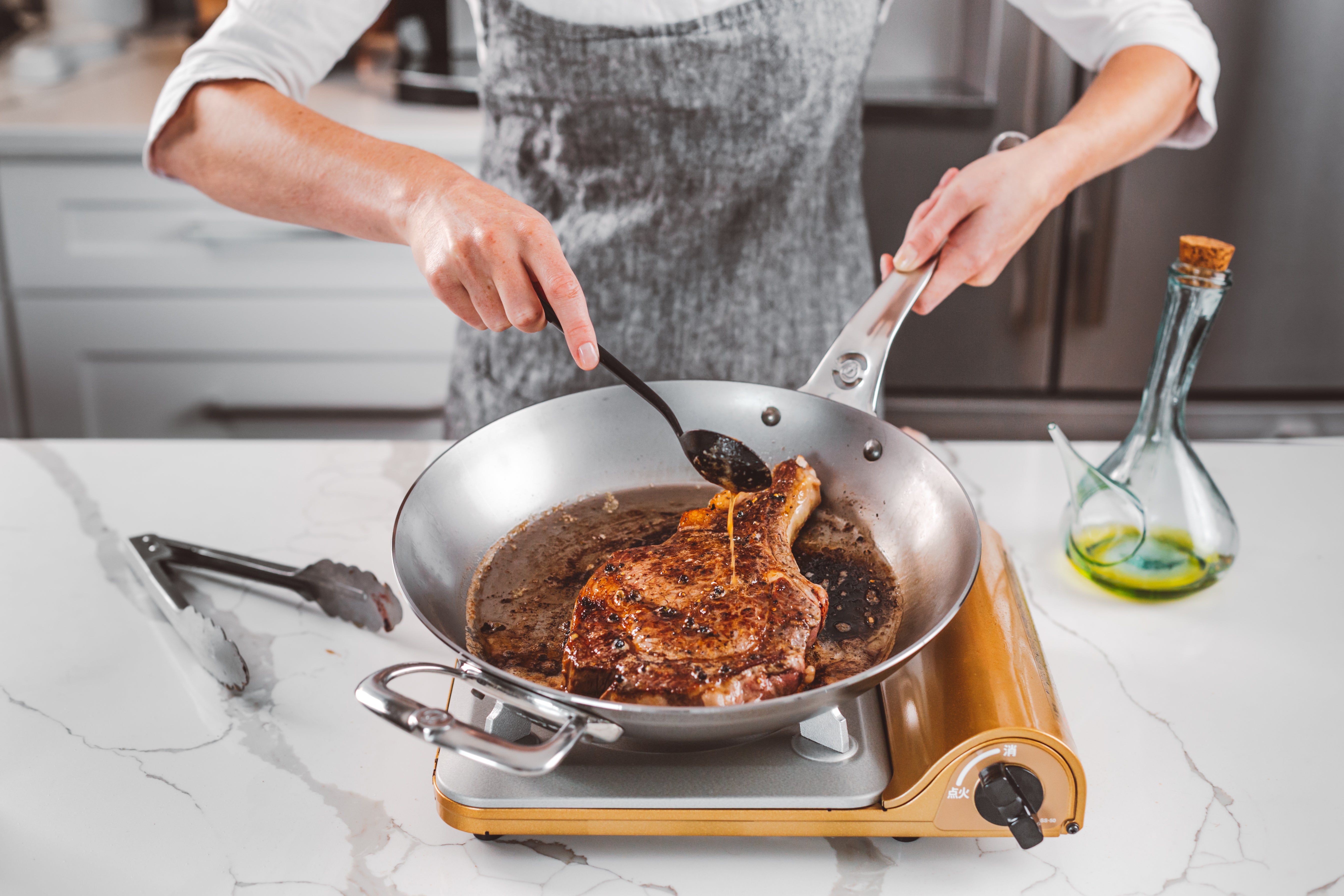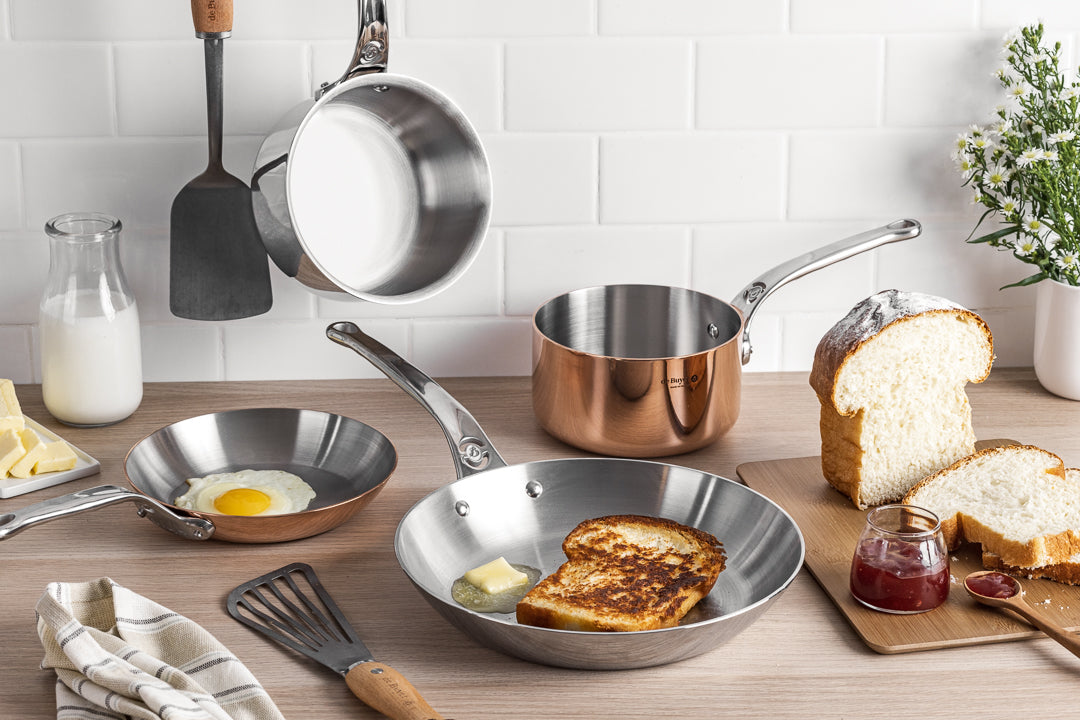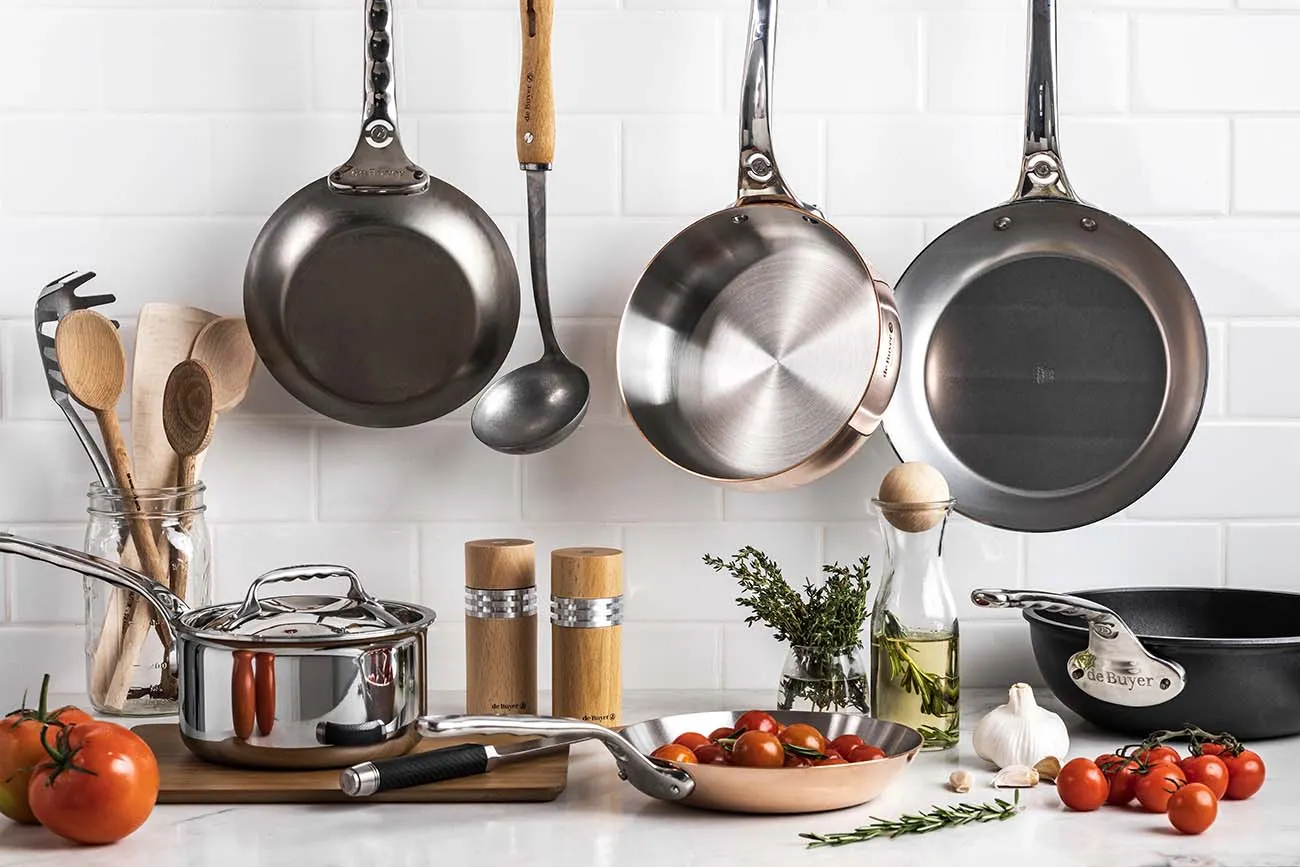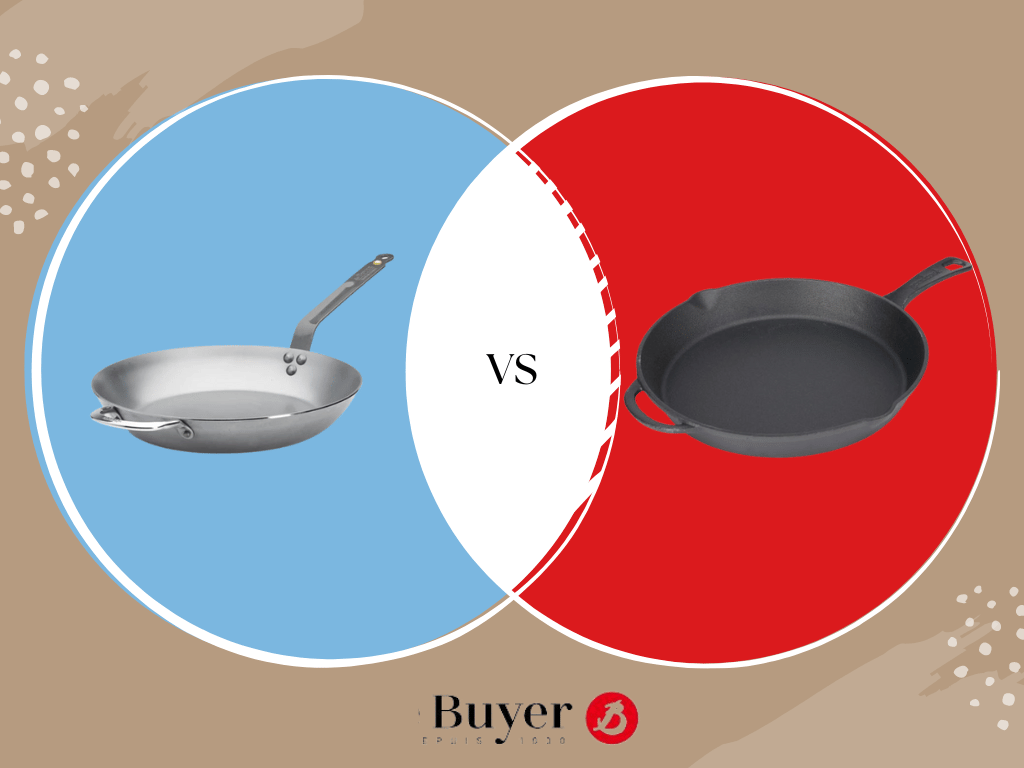
Guides
Frying Pan Types Explained: Choosing the Best Option
Frying pans are a must-have, multifunctional cookware item. They gently cook delicate foods like ... ![]()

Guides
Pan Frying 101: A Comprehensive Guide to the Perfect Fry Cooking Method
Pan frying is a versatile and popular cooking method used in both professional and home kitchens.... ![]()

Guides
Discover the Essential Types of Kitchen Knives Every Chef Needs
Just as a frying pan can’t replace a Dutch oven, a bread knife can’t replace your go-to paring ... ![]()

Guides
Upgrade Your Kitchen: What is the Best Type of Cookware?
The best type of cookware isn’t the most expensive or trendy. The best cookware is a vehicle for ... ![]()

Guides
Unleash Your Inner Chef: The Essential Cookware You Need
American chef Paul Prudhomme said, “You don't need a silver fork to eat good food.” Chef Prudhomm... ![]()

Guides
Craft Culinary Excellence: The Best Utensils for Stainless Steel
A chef is only as good as their worst tool. At de Buyer, we empower chefs and home cooks with the... ![]()

Guides
Enhancing Your Culinary Craft: What Is Cookware?
Cookware is the vehicle for crafting delicious French crepes, American sliders, and complex Germa... ![]()

Guides
Healthy Cooking Starts Here: Your Guide to Non-Toxic Cookware
Cooking healthy food for yourself and others necessitates much more than just quality ingredients... ![]()

Guides
Mastering the Flame: The Best Cookware for Your Gas Stove
What do Auguste Escoffier’s famous Peach Melba and Julia Child’s beef bourguignon have in common?... ![]()

Guides
Carbon Steel vs. Stainless Steel Pans: Which Is Best?
When picking the best cookware as a professional chef or home cook, you’re inundated with options... ![]()

Guides
Efficiency Elevated: The Best Cookware for Induction Cooktops
We're all familiar with the traditional nostalgia of the gas stove, but some of these appliances ... ![]()

Guides
What Is Carbon Steel Cookware? A Guide for Discerning Cooks
With origins tracing back to ancient China, carbon steel cookware has been refined and perfected ... ![]()

Guides
Choosing The Right Fry Pan Size
Choosing the right fry pan size is a crucial ingredient in the recipe for culinary success. It's ... ![]()

Guides
Best Cookware Material For Searing Food
Searing is an essential technique in the culinary arts, known for locking in flavors and creating... ![]()

Guides
Best Pans For Even Heat Distribution |
Welcome to the world of culinary excellence, where even heat distribution is a crucial ingredient... ![]()

Guides
Cooking With a Braiser vs Skillet : Knowing The Difference
Welcome to the delightful world of cooking! We're about to embark on a culinary journey, compar... ![]()

Guides
Getting The Perfect Sear On a Steak
Welcome to the culinary adventure of achieving the perfect sear on a steak! It's an art form th... ![]()

Guides
Best Pots & Pans Perfect For Electric Stove
The quest for the perfect pots and pans to complement an electric stove can significantly impact ... ![]()

Guides
Comparing 3 Ply vs. 5 Ply Cookware
Understanding the difference between 3 Ply and 5 Ply stainless steel cookware is essential for a... ![]()

Guides
What Is a Saucepan & What's it Good For?
A saucepan isn't just a kitchen tool, it's a testament to culinary evolution and a testament to ... ![]()

Guides
What You Need To Know About Removable Handle Cookware
Do you have a favorite pan you love to use in the kitchen, but you’re limited in what you ca... ![]()

Guides
Top 5 Removable Handle Cookware
Owning cookware with removable handles not only makes cooking easier, it also makes clean-up... ![]()






































